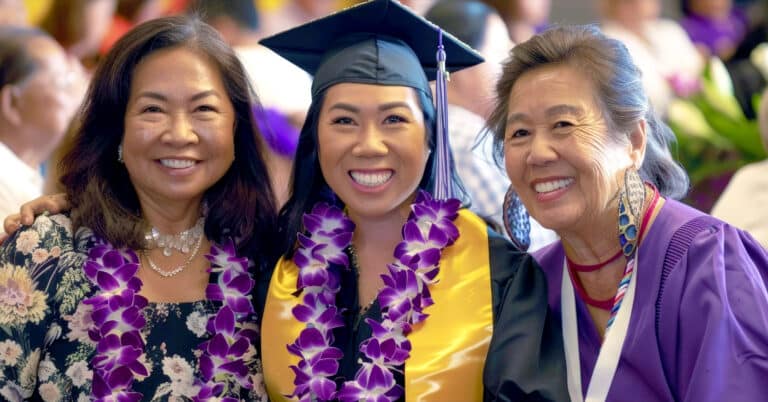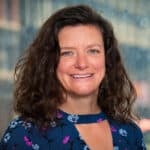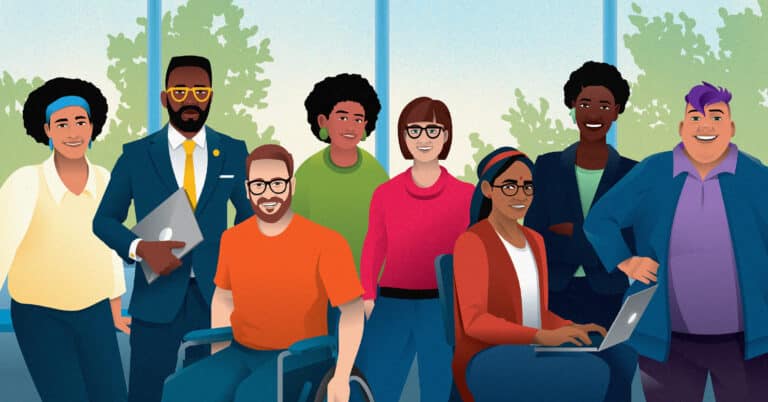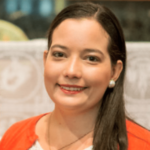By Karla Phillips-Krivickas, CEO and founder of Think Inclusion
As more schools shift toward personalized learning practices, a question that remains unanswered is whether this new approach to teaching and learning will accommodate the needs of those with disabilities.
Organizations like KnowledgeWorks have long supported states, schools and districts with their transition to personalized, competency-based learning. Yet across the field, much remains unknown about its collective impact on special education.
To address this gap in the knowledge base, I spent the winter and spring interviewing educators, stakeholders and state agencies to hear from those on the front lines about how personalized learning practices are impacting students with disabilities in schools across the country.
An unexpected discovery
I began my research journey intending to discover the implications of personalized learning on special education. I soon realized that personalized learning was not simply having an impact but fundamentally altering the relationship between general education and special education classrooms. Namely, tearing down the invisible wall that for too long has divided students with disabilities from their peers.
From physical separation of instructional space to differing laws, budgets and staffing requirements, special education has been stigmatized – dividing students with disabilities and the people and resources that support them from general education students. In fact, one of the first decisions teachers will make when entering their preparation programs is whether they will pursue a general education certificate program or a special education preparation program.
Personalized learning is changing that dynamic by making learning experiences in general education classrooms customized for each student based on their individual strengths, needs and interests. This approach creates a more inclusive learning environment by making it possible for more students with disabilities to be included in general education classes.
Creating inclusive classrooms with personalized learning
While Individualized Educational Programs (IEPs) have been used widely in schools for decades, they are typically reserved for students with disabilities.
Personalized learning by its very design treats each learner as a unique individual, with a unique set of needs and aspirations for the future. This approach facilitates strong relationships between learners and educators and uses responsive curriculum and assessment to create deeper learning and higher levels of student engagement.
When every learner receives the flexibility and support they need to achieve, students with disabilities are no longer singled out. While students with disabilities are entitled to accommodations under federal law, in a personalized learning environment those modifications aren’t conspicuous, they’re expected. That said, ensuring those rights remain protected will be important as individualized support becomes more normalized.
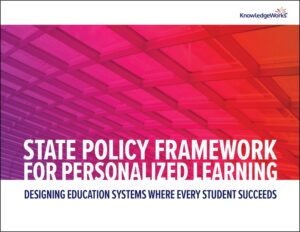
The State Policy Framework for Personalized Learning will help states and stakeholders define and navigate their pathway from the exploratory phase of system design, where a limited number of districts engage in personalized learning practices, to statewide transformation. Read Now »
“The advent of special education was a recognition that not all students fit in the traditional one-size-fits-all model. Personalized learning is an admission that really no one does,” said Aaron Peterson, special education director at South Sanpete School District, Utah.
Flexibility is fundamental to success
But how do you personalize learning for every student?
This seemingly impossible task often feels less daunting for special education teachers, who are accustomed to designing and executing on learning accommodations. However, other educators may need additional support to make a successful transition to personalized learning. This is where Universal Design for Learning (UDL) comes in.
UDL is not only a framework but a philosophy that we can and should optimize teaching and learning, by designing systems that provide multiple means of engagement, representation and options for expression for all learners.
“It’s not about designing thirty-two different plans,” Robbin Clark from the Utah Schools for the Deaf and Blind explained. “But rather thinking of maybe six different ways for students to choose from to learn it or demonstrate it.”
The principles of universal design reinforce the basic idea that you don’t need individualized plans for every learner, but rather that the flexibility to offer students a variety of ways to demonstrate learning in a way that works for them.
Ultimately, all learners, regardless of cognitive and physical ability, need access and opportunity to participate meaningfully in challenging learning experiences. Universal design provides a framework and strategies for making learning more inclusive and transformative for everyone.
Practical advice
Throughout my conversations, those I interviewed offered valuable pieces of advice for how to effectively link personalized learning and special education.
- Design personalized learning systems with special education requirements in mind. Before any other steps are taken, general education and special education need to be closely tied together in the planning process. Samantha Kennedy, assistant principal of the Batesburg-Leesville Elementary School in South Carolina, wisely advised others to consider special education throughout the process of designing and implementing personalized learning, always keeping students with disabilities in mind.
- Intentionally integrate and include special education staff on the personalized, competency-based learning implementation team. When Cory Steiner arrived at the Northern Cass School District 97, in Hunter, North Dakota, where he currently superintendent, he recognized that special education was operating in a silo, but he says that changed when the district embraced personalized learning. This was due in part to the district embrace of the personalized philosophy but also because the district took the opportunity to reimagine how they work with their educators. Leadership also made an intentional effort to include the special education staff on the personalized, competency-based learning team.
- Embrace universal design principles in system design and implementation. Throughout implementation, it is important to also ensure that all students have access to the range of learning experiences available in a personalized, competency-based setting. West Fargo Public Schools Director of Special Education Rachel Kjonaas, sees developing student supports that facilitate and enhance access to a variety of courses and curriculum for students with disabilities as one of their key goals.
- Recognize that personalized learning does not replace the rights and requirements of an individualized education plan. As individualized support becomes more prevalent, several interviewees urged caution to not forget that the IEPs of students with disabilities must still be honored. Having special education staff at the table from day one will facilitate alignment and prevent conflicting messages.
Conclusion
Personalized learning is transforming the relationship between general education and special education. Across the country, educator mindsets are evolving to embrace what special educators have long understood: Every child deserves a unique learning experience, and teaching must be responsive to students’ strengths and interests.
As differentiated support is normalized and encouraged in classrooms, a more inclusive learning experience will result. Though considerations for those with disabilities must still be explicitly and deliberately included in system-design decisions, the introduction of personalized learning in general education classrooms will help to minimize the harmful practice of sorting and separating learners with different needs.
Years of research has articulated the benefits of inclusive learning environments, including the fact that students with disabilities will experience higher educational outcomes when given the opportunity to learn alongside their peers. Students of all abilities can grow socially and emotionally when we pursue learning approaches that prioritize the full scope of a learner’s needs.
Personalized learning allows students to experience school, complete coursework and demonstrate proficiency in different ways – making it possible to accommodate special education students in general education classrooms while improving agency and outcomes for all learners.
Meeting students where they are and providing them with the tools they need to achieve is at the very heart of special education. Personalized learning is special education, but for all students, not just some. Embracing this philosophy and approach to education at a systems level will benefit all students.
Join Karla Phillips-Krivickas from Think Inclusion and Virgel Hammonds from KnowledgeWorks as they discuss these findings from a series of interviews with school leaders across the country in an upcoming webinar.
